| REF: | 15280_287470 |
| DATE: | 11 - 20 May 2025 20.May.2025 |
| LOCATION: |
Sharm El-Sheikh (Egypt) |
| INDIVIDUAL FEE: |
4500 Euro |
Introduction:
Artificial lift refers to the use of artificial means to increase the flow of fluids, such as crude oil or water, from a production well. This artificial lift methods training course is typically achieved through mechanical devices in the well or by altering the weight of the hydrostatic column by injecting gas.
This artificial lift methods training will establish a solid understanding of various artificial lift methods and guide in the selection process for maximizing production and return on investment. When reservoir pressure is insufficient for natural fluid rise, artificial lift systems are essential, although they may also enhance flow rates in naturally flowing wells. The fluid produced may be oil, water, or a mix, often accompanied by gas.
What is an Artificial Lift?
The term artificial lift defines any method used to increase the pressure within a reservoir to help move the production fluids to the surface when the natural pressurization of the reservoir is not sufficient to do so. This technique is vital for increasing the production of oil and gas from wells.
Targeted Groups:
- Production and field operations engineers.
- Junior and Senior Petroleum Engineers.
- Field Technicians.
- Geoscientists.
- Reservoir Engineers.
- This artificial lift methods course is for anyone wanting to understand the effects of production systems on their field reservoirs.
Course Objectives:
Participants in this artificial lift methods course, will learn to:
- Apply strategies to economically maximize oil production with artificial lift systems.
- Make essential PVT properties and influx performance calculations related to artificial lift.
- Understand and apply the principles of multiphase tubing and piping flow.
- Select the appropriate artificial lift method by assessing the method's drawdown capacity, initial and running costs, and the production range and depth possible.
- Specify components and auxiliary equipment needed for each lift system.
- Recognize best practices for extending lift system and equipment life.
- Design and manage lift method functions under harsh conditions.
Targeted Competencies:
Participants' competencies in this artificial lift methods training, will:
- Understand various artificial lift methods.
- Know the principles and applications of artificial lift techniques.
- Ability to select appropriate artificial lift methods for different reservoir conditions.
- Proficiency in the design and optimization of artificial lift systems.
- Skills in troubleshooting and maintaining artificial lift equipment.
- Awareness of the economic considerations in artificial lift implementation.
- Familiar with the latest technologies and advancements in artificial lift methods.
- Competence in analyzing and interpreting data related to artificial lift performance.
- Capability to integrate artificial lift strategies into overall production plans.
- Understand the health, safety, and environmental aspects of artificial lift operations.
Course Content:
Unit 1: Oil and Gas Production Introduction:
- Reservoir properties.
- Reservoir pressure.
- Types of production.
- The necessity for artificial lift systems.
- Improve recovery factor through artificial lift.
- Choose an artificial lift method.
Unit 2: Beam Pumping Technology:
- Fundamental Beam Pumping System.
- Beam Pump Operation.
- Beam Pumping System Components.
- Explore Beam Pump Instrumentation and Control.
- Beam Pump Operation Modes.
- Oil and gas well Communication with the Central Control Room.
Unit 3: Gas Lift Systems Concepts and Equipment:
- Introduction to gas lift methods, concepts, and theory.
- Overview of gas lift equipment valve operation and equations.
- Design of gas lift systems.
- Gas lift design overview (conceptual vs. detailed) and principles.
- Generating 4 variable lift curves for gas lift wells.
- Gas lift unloading process and key factors to ensure success.
- Consideration of safety factors for mandrel spacing and valve operation.
- Detailed gas lift design procedure for continuous gas lift wells; special applications.
- Gas lift systems diagnosis, practical troubleshooting, and optimization.
- Understand gas lift operations, monitoring, and procedures for unloading a new well.
- Gas lift diagnosis and troubleshooting; key concepts and procedure for analysis.
- Flowing gradient survey interpretation and matching; determination of injection depth, orifice pressure drop, etc.
- Dealing with problem wells (instability, slugging, multi-point injection, etc.).
- Re-design of a gas lift valve setting for an existing well to address these problems.
- Shortage of gas supply; gas-lift allocation concepts & multi-well optimization techniques.
Unit 4: ESP (Electric Submersible Pump) Technology:
- Various ESP Systems and applications.
- ESP system components and equipment.
- ESP Pump Technology.
- Select and calculate ESP performance.
- ESP Drive Systems: advantages and limitations.
- ESP Installation Power Requirements.
- ESP Installation, Maintenance, and Troubleshooting.
Unit 5: PCP (Progressive Cavity Pump) Technology:
- History of the Progressive Cavity Pump.
- PCP Design.
- Construction Materials.
- Elastomer properties.
- PCP Identification.
- Typical PCP Configurations.
- Oil and gas Well Preparation for PCP.
- Instal the Stator and Rotor.
- Identify common failures in Stators and Rotors.


